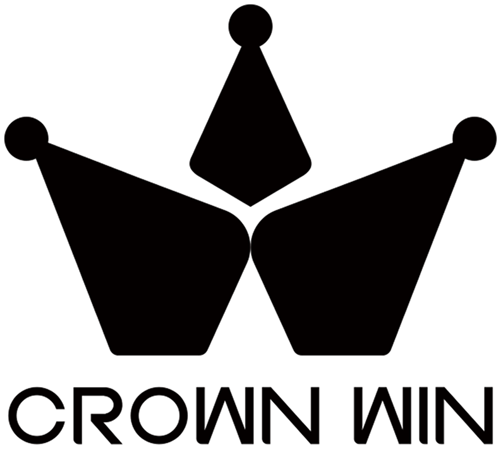Compelling Hook: When Your Product Demands a Second Look
Suppose that your product is on a store shelf among dozens of other competing products that seek the same customers. However, this is not the case with yours. One look at its innovative package cover makes people stop and be compelled to pick it and view it thoroughly, and ultimately choose it among all the others.
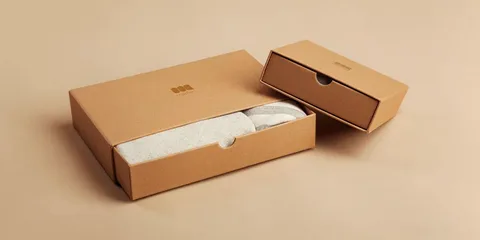
The packaging sleeves are now much more than mere protective sleeves in the modern marketplace that is highly competitive. They have become a potent marketing instrument that has the capability of either making or breaking the success of a product. As consumers use 70 percent of their buying experience at the point of sale, and because unboxings can be viral moments with any unboxing, the pressure to develop memorable packaging experiences has never been greater. To this, one can add the increasing pressure on the search for sustainable solutions and the desire to have a personalized experience, and it is quite obvious that the old methods of packaging will not suffice any longer.

The five innovative ideas of packaging sleeves that will be discussed in the paper will alter how brands interact with consumers. With as simple designs as are capable of saying a lot when they are simple, and the interactive designs which will have a lasting impression, you will find useful tips and strategies with real-life examples which can be implemented immediately.
What Is a Packaging Sleeve & Why It’s a Powerful Tool
A packaging sleeve is a protective outer layer that wraps your main product packaging, usually composed of such materials as cardboard, paperboard, or sustainable versions. Imagine it as a starting point of communication between your brand and the consumer, the essential point of contact that can accommodate anything, such as the product specifications or brand storytelling with its elements.
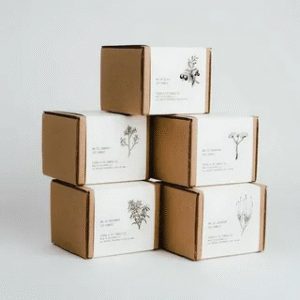
The contemporary sleeves are multi-strategic compared to the traditional packaging, which only holds and defends. They provide the brand with an additional canvas to play with branding and visual communication, and in the process, provide some practical benefits, including protection during shipping and storage.
More importantly, they offer the potential of enhanced unboxing experiences, which can become the source of customer experience and social media engagement. The transition to new sleeve designs is not just a creative trend, but a response to the latent change in consumer behavior.
The consumer of now requires his/her packaging to be Instagram-ready, greener, and more personal. Brands that have realized the packaging sleeves as a marketing tool and not an expenditure that should be incurred are always doing better operations than those that have incorporated packaging sleeves as a side feature. According to premium packaging studies, the sleeve design option can increase the perceived value of the product to a maximum of 30 percent, and thus it is an important component of the overall brand strategy.
Idea #1: Minimalist Sleeve Designs

The clean lines of minimalist sleeve design, the purposeful use of white space, limited color palette, and carefully selected typography are all based on the philosophy of less is more, as a way to create a bold visual impact. This technique eliminates the glitzy element to focus on what counts a lot, your brand message and product quality. Minimalist sleeves are good aesthetics. They are cheaper to print due to the reduced printing requirements, improved delivery of product information without overloading the visual display, and a costly yet luxurious brand image that is attractive to the modern consumer.
It is also easy to tailor minimalism to other markets and cultures, and it works best when a multinational corporation desires to share a similar aesthetic impression. The most outstanding sleeve design of minimalism is in Apple product packaging. Their small font and tactical product pictures on white screens say a lot about quality without saying a single word.
Similarly, skincare, like Glossier, has built complete brand personas on the premise of minimal packaging that is new, modern, and trustworthy. These brands understand that, in a world full of visual noise, simplicity becomes making a statement.
To achieve the minimum design and not create dull packaging, it is important to focus on the quality of the materials and small details. Add your own twist; use high-quality paper stock, spot UV, embossed logos, or foil stamping. Typography is a vital component; in the minimalist design case, you need to invest in high-quality fonts that suit the personality of your brand. The colour choice is also an important point; the use of any accent colour can make a dramatic effect when strategically placed on a plain background.
Idea #2: Interactive / Experiential Sleeves
Interactive packet jackets make passive product encounters active experiences that establish emotional affiliations with customers. These designs could be full of pull-tabs unlocking concealed messages, surfaces that are texturized that you want to feel, sliding components that divulge the benefit in the product, or QR codes that unlock digital information.
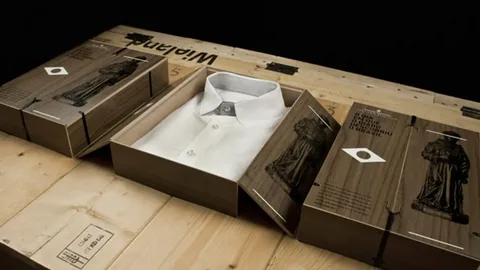
The strength of interactivity sleeves is in the fact that they leave memorable moments much longer than the point of purchase. Once consumers are involved in the process of discovering your product, they dedicate emotional energy, which is converted to loyalty towards the brand. The experiences are also shareable in nature and tend to produce organic social media content when customers record the experience of unboxing. Educating consumers on the features of the products in an interactive manner without being invasive is also a chance offered by interactive elements.
Birchbox has transformed the subscription box market by designing sleeves that have personalized features and surprise items that make it look like every monthly shipment is a present to open. Technology firms have adopted the pull-tab design, where the product specifications are revealed gradually as the consumers move the various parts of the sleeve. Since luxury brands are more focused on the value of touch, such as embossed decorations or a velvet-covered unboxing experience adds to the high-end unboxing experience.
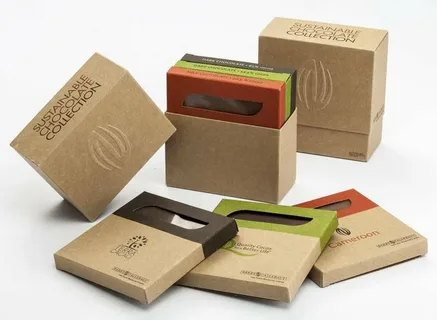
Be innovative and be practical in applying interactive elements. Consider manufacturing intricacy and cost implication- complicated die-cuts and moving components can lead to a giant impact on manufacturing schedules and budgets. Ensure that the interactive capabilities can add to the core product experience and not complicate the product experience.
Test durability to ensure that interactive components will not break during shipping and handling, and that these components will not be affected with regard to their functionality. Most importantly, make sure that the interactive component is not a mere gimmick; there is a point to it, such as expressing brand values, product benefits, or even causing real delight.
Idea #3: Sustainable & Eco-Friendly Sleeves
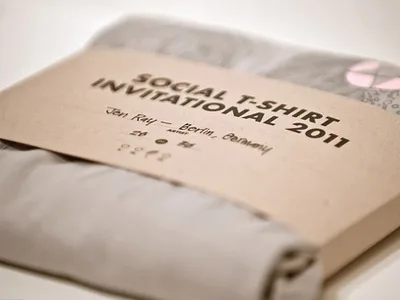
Sustainable packaging sleeves are no longer an option; they are the obligatory state of the brands that do not wish to lose their positions in a marketplace that is increasingly conscious of the environment. Sustainability in packaging, consumer research has always been considered when making purchases, and 73 percent of millennials surveyed stated that they would be willing to pay high prices for sustainable sleeve materials.
Substitutes that can be easily utilized and with less environmental impact can be recycled paperboard, biodegradable materials, mushroom packaging, and films based on seaweed. The bioplastics made out of renewables are robust, and their carbon footprints are considerably less. The worth of design innovations is intended to reduce the use of materials because of clever use of structural engineering, producing sleeves entirely of recycled material, and it is even clear about its values toward the environment through its packaging.
Naked packaging and compostable sleeves Cosmetics Naked packaging Cosmetics Cosmetics such as Lush have been the first to roll out naked packaging and compostable sleeves in their mission of zero-waste. In her case, even big firms like Unilever have committed to making all their packaging either reusable, recyclable, or compostable by 2025, and their example is making other companies shift towards environmental sustainability.
In choosing sustainable sleeve products, suppliers must be carefully vetted, and a life cycle analysis must be carried out. Locate certifications such as FSC (Forest Stewardship Council) of paper material or cradle-to-grave certifications of comprehensive sustainability checking. Consider end-of-life disposal- material that can be recycled must be sustainable only when they are recyclable by facilities found locally. Cooperate with the suppliers who may provide clear information on sourcing of materials, manufacturing processes, and computation of carbon footprint.
Idea #4: Personalization / Custom Variable Sleeves
Sustainable packaging sleeves are no longer an option; they are the obligatory state of the brands that do not wish to lose their positions in a marketplace that is increasingly conscious of the environment. Sustainability in packaging, consumer research has always been considered when making purchases, and 73 percent of millennials surveyed stated that they would be willing to pay high prices for sustainable sleeve materials. Substitutes that can be easily utilized and with less environmental impact can be recycled paperboard, biodegradable materials, mushroom packaging, and films based on seaweed.
The bioplastics made out of renewables are robust, and their carbon footprints are considerably less. The worth of design innovations is intended to reduce the use of materials because of clever use of structural engineering, producing sleeves entirely of recycled material, and it is even clear about its values toward the environment through its packaging. Naked packaging and compostable sleeves Cosmetics Naked packaging Cosmetics Cosmetics such as Lush have been the first to roll out naked packaging and compostable sleeves in their mission of zero-waste.
In her case, even big firms like Unilever have committed to making all their packaging either reusable, recyclable, or compostable by 2025, and their example is making other companies shift towards environmental sustainability. In choosing sustainable sleeve products, suppliers must be carefully vetted, and a life cycle analysis must be carried out.
Locate certifications such as FSC (Forest Stewardship Council) of paper material or cradle-to-grave certifications of comprehensive sustainability checking. Consider end-of-life disposal- material that can be recycled must be sustainable only when they are recyclable by facilities found locally. Cooperate with the suppliers who may provide clear information on sourcing of materials, manufacturing processes, and computation of carbon footprint.
Idea #5: Artistic / Visual Storytelling Sleeves
The product is being brought out on a canvas of artistic package sleeves, whereby the brand can be narrated in showing emotion by illustration, photography, graphic design, or mixed media. The designs tend to collaborate with artists, be culturally referenced, or unfold the visual narratives that traverse across product lines.Visual storytelling sleeves create an immediate shelf presence that cuts through the clamor of competition and creates brand identity and values. The artistic designs would be inherently social and would turn into objects of collection, extending the lifecycle of products upon consumption. The innovation of sleeve-treating cleaning products of Method was a commodity category innovation because the sleeve is treated as an art piece, with graphic and odd color combinations that transformed cleaning products into a dream. Wine brands also collaborate with artists to create limited-edition sleeves that cause bottles to look more gift-like. The use of the same seasonal collections by fashion brands in packaging sleeves will typically connect brand experiences that will support campaign messages.
The successful use of artistic sleeves must be attributed to the correct choice of artists and brand integration. Choose the artist whose style is inherent based on your brand personality and target audience. Write accurate creative briefs which outline brand specifications, technical requirements, and campaign objectives but leave the creative freedom within them. Ensure the visual coherence of the touchpoints, e.g., artistic sleeves should be used to support the already established components of the brand image, but not conflict with them.
How to Choose the Right Sleeve Strategy for Your Brand
The general procedure of selecting the most advantageous sleeve tactic has to be carried out by a detailed deliberation of the diverse factors that will establish the possibility and efficacy. Start by ensuring that you have adequate understanding of the demographics, psychographics and shopping behaviors of your target audience. The viability of minimalistic style would be the urban professionals who need to be provided with quality experience, and the interactive features can be enjoyed by younger consumers who enjoy sharing and interacting.
The high luxury goods can justify the high-end interactive functionality or advanced green technologies, but the latter can justify the minimalist approaches that fail to generate differentiation but can be afforded by the mass-market products.
Competitive analyses: Assess competitive conditions to identify white space opportunities where your sleeve strategy can create a high level of differentiation.Budget is not only calculated on the basis of the direct cost of production, but also on the long-term ROI calculation. Sustainable materials can, although they might be more costly in the first place, generate a premium price and a customer base that can recoup the investment.
The interactive elements are more expensive to develop and can generate organic marketing values through social sharing. Carry out small scale testing of the different strategies to get the real performance statistics before investing on large production houses, consumer testing and prototyping can provide invaluable experience that would enable the avoidance of costly mistakes and maximize design efficiency.
Make actual models on the basis of which the physical testing will be carried out and conduct focus groups among targeted consumers to learn about the emotional responses. Monitor the social media usage when testing different strategies in small markets to understand which kind of designs will result in organic promotion and positive feelings.
Common Pitfalls to Avoid
The most notorious error is most likely the excessively designed packaging sleeve that is a nightmare of a visual image a visual jumble that dislocates as opposed to attracting people. It is tempting to use every potential design feature or message, but the good sleeves are memorable as they have a smaller design selection.
Too many colors, fonts/graphics: too many colors, fonts, or graphic elements can overload the consumer and water down the brand message.
Design ideas are developed by ignoring the constraints of production so that what looks beautiful in computer mockups cannot be made in real meat. The production partners, who will be participating in the design phase, must be informed of the restrictions of the materials, printing possibilities, and the cost of this. What works under a small-scale prototype may not work under high-volume production without significant modification due to the trade-off between functionality against aesthetics.
Easyly tearing, low-protective sleeves or sleeves that have items difficult to access will eventually destroy brand perception despite its beauty to the eye. Find the balance between the creative priorities and realism, like durability, shipping, and adherence to regulations.
Brand inconsistency occurs when sleeve designs fail to correspond to the brand identity or create confusion in brand positioning. Creative expression should also add value to the level of brand equity, but not contradict it despite its significance. Ensure that the artistic or innovative sleeve tactics are ones that would be termed as being truly connected to your story/brand and values.
Conclusion & Call to Action
The packaging sleeve is one of the least but the most potent instruments of contemporary brand marketing that offers the opportunity to create a unique customer experience along with practical protection and an information tool. It is not that one strategy is better than the other but rather different sleeve strategies are the ones that are going to reflect the values of its brand that will actually speak to the actual needs and desires of the customers and be truly successful in the target markets that will be successful in the brand strategies. Start with one strategy that fits your brand and your budgetary limit- give it a trial, and wait and watch what you can achieve in customer response, and refine your strategy according to the real performance outcome. The brands that treat a sleeve of packaging as an investment, and not expenditure, always fare better than their competitors who treat it as an appendix.
